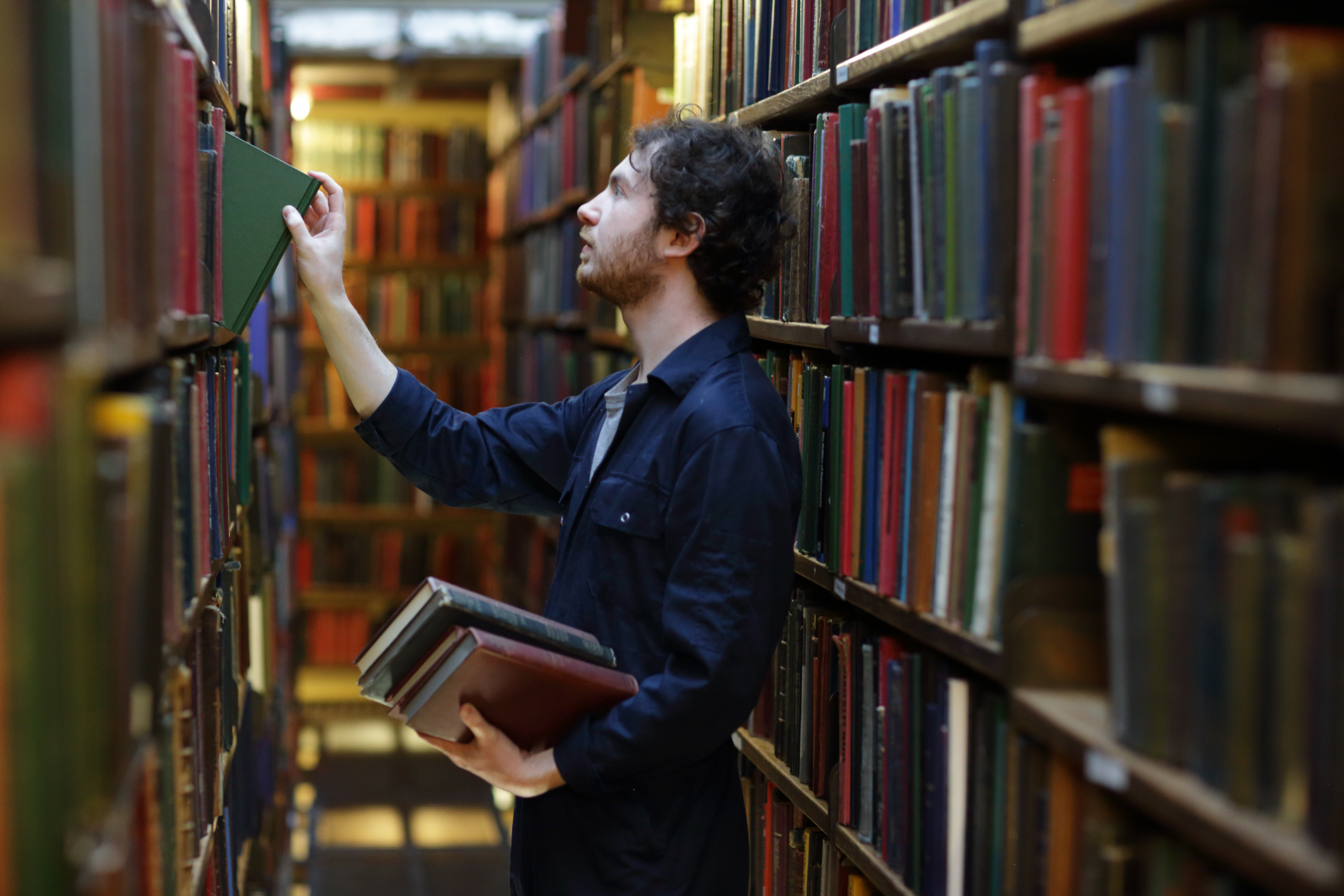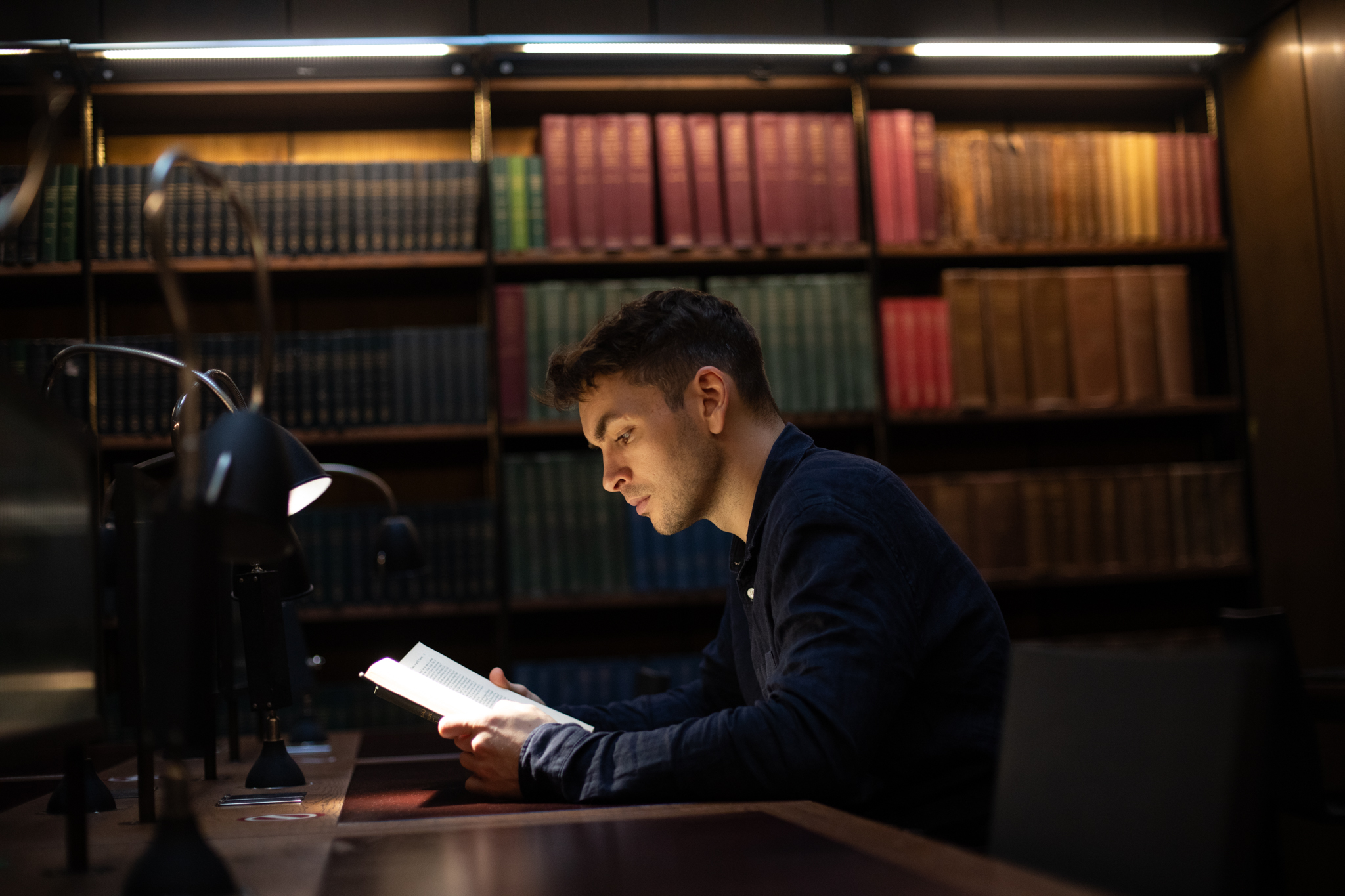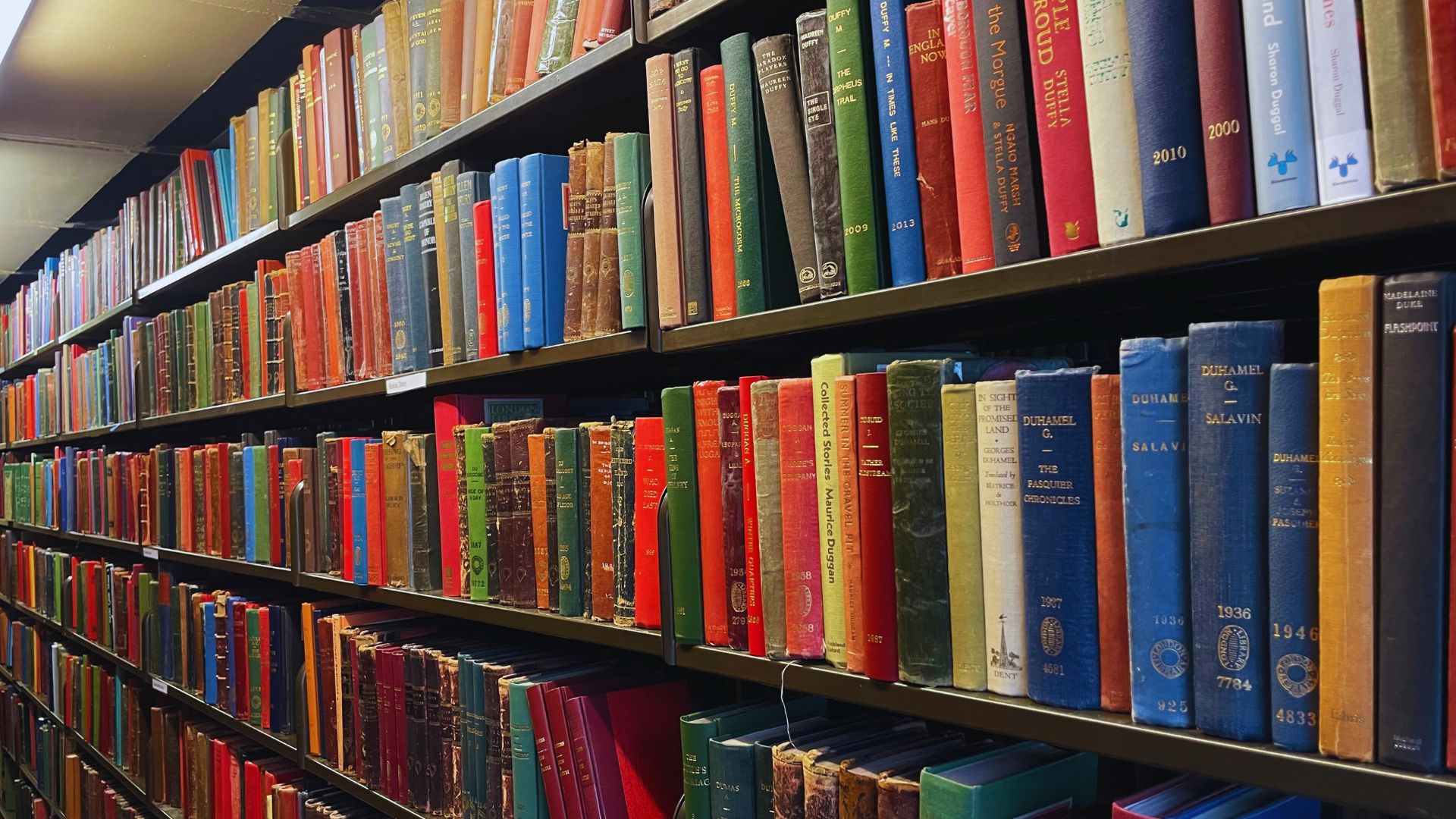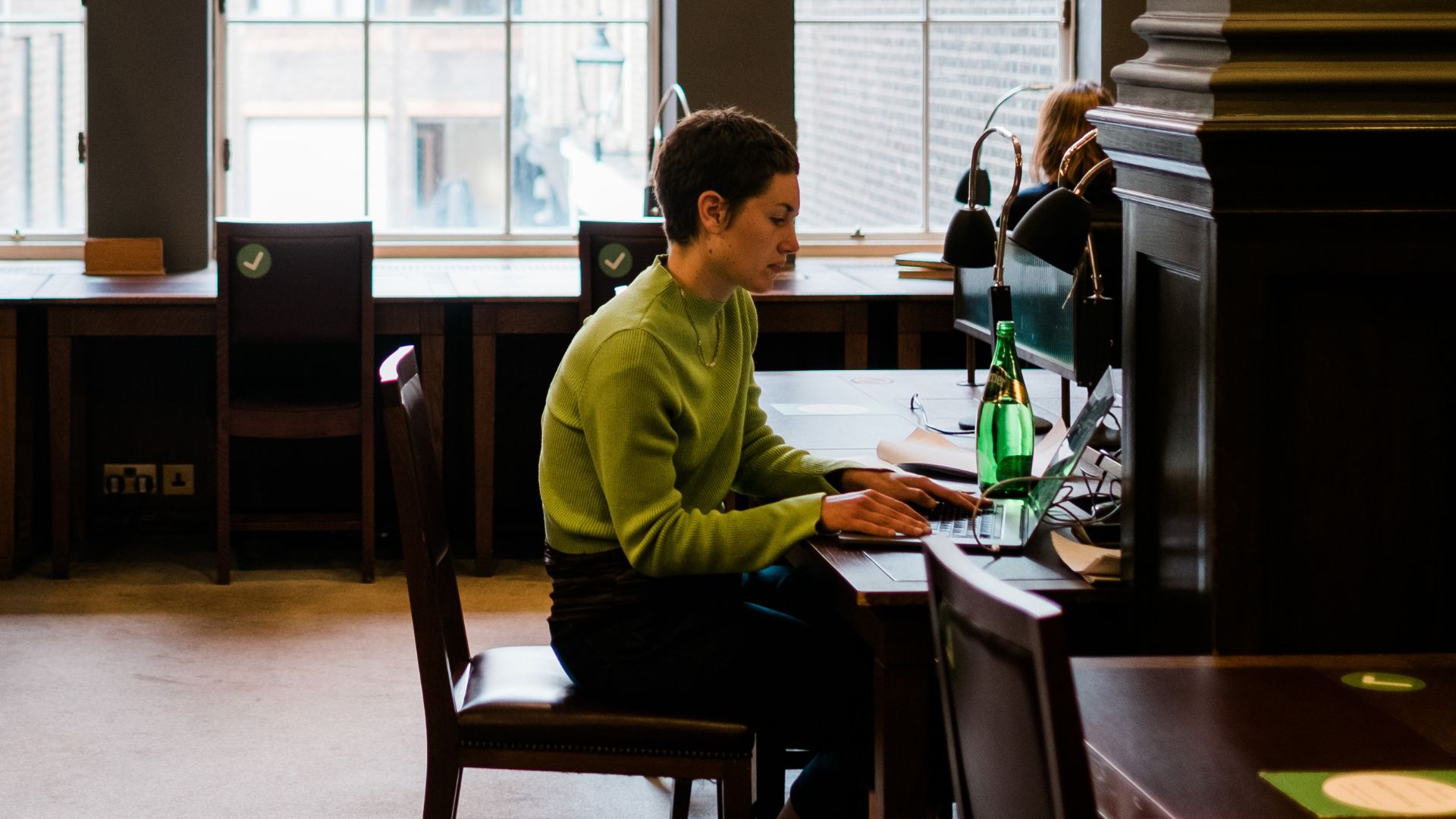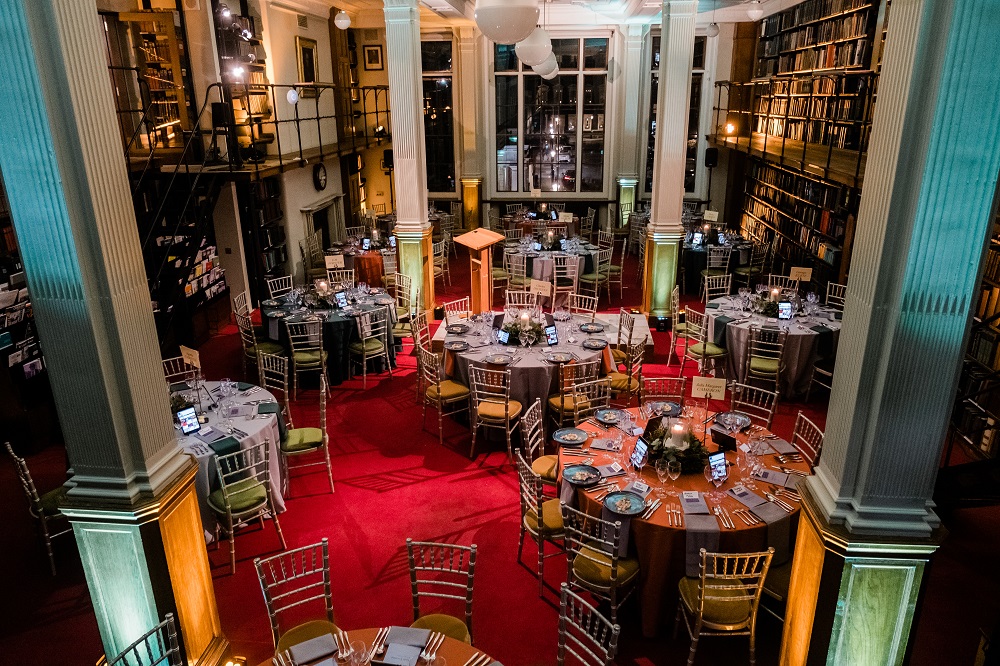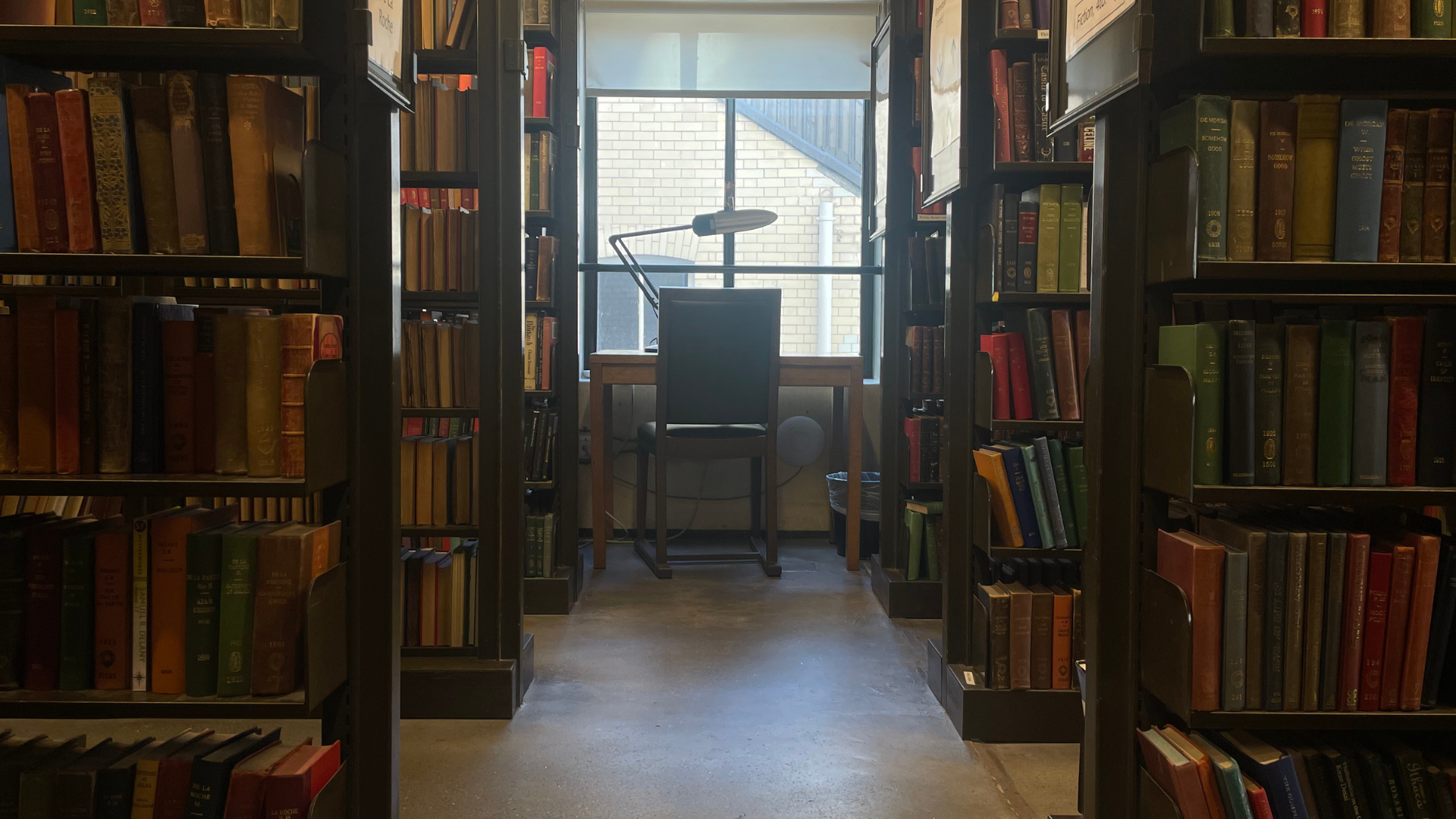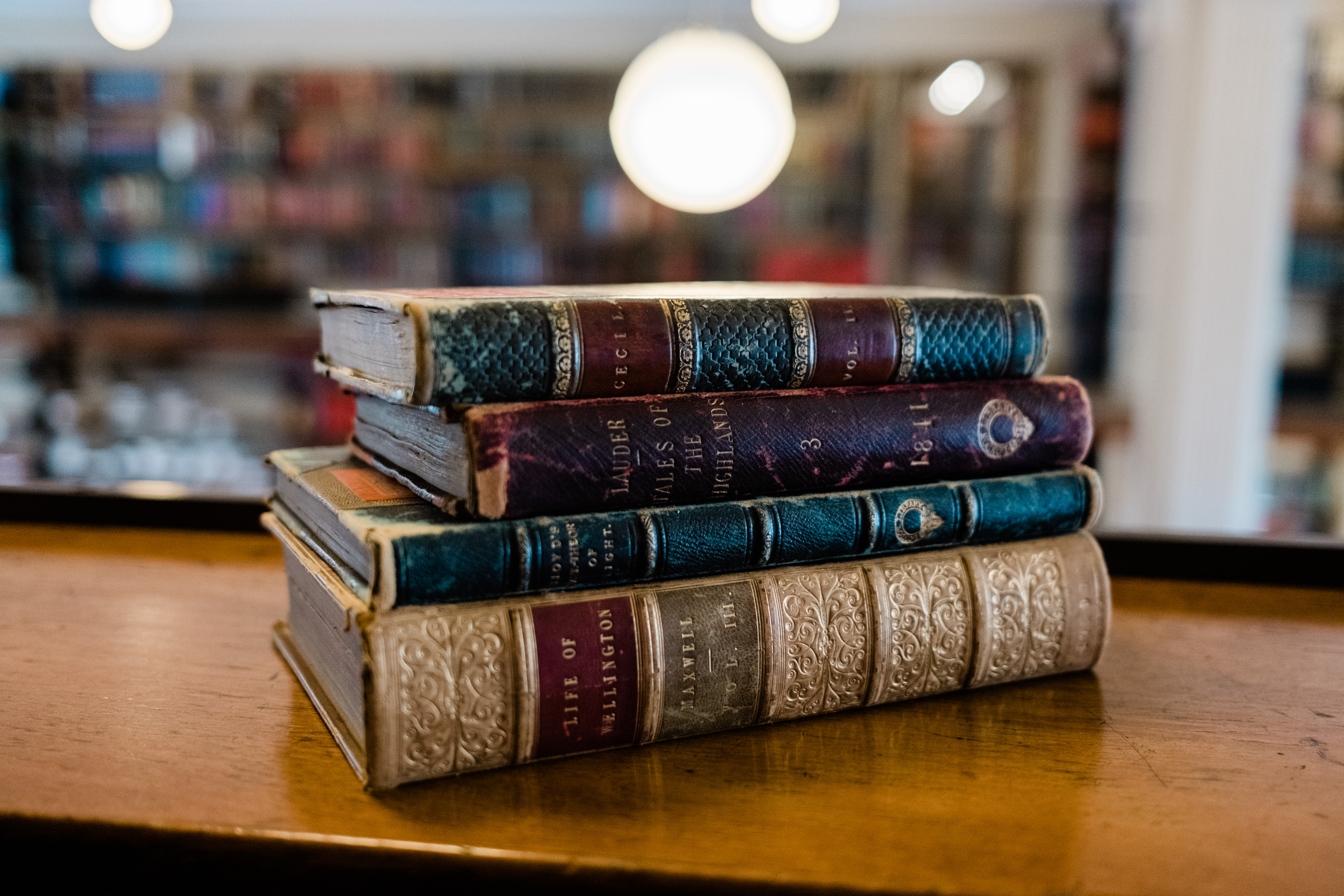Hundreds of bibles, translated into dozens of languages, populate some of the shelves of The London Library. Among these is a remarkable collection of early English versions with a copy of the King James Bible, published in May of 1611, at its heart. In the latest article adapted from a series recently published in History Today, Dunia Garcia-Ontiveros, Head of Bibliographic Services at The London Library, explores these unique volumes.
The King James Bible, which in 2011 celebrated its 400th anniversary, is part of a long chain of English translations of the Scriptures where every new version owes a debt to its predecessors. The first link in the chain was forged by William Tyndale 80 years before James I commissioned his Authorised Version.
The Oxford-educated religious reformer, who was inspired by Erasmus and Luther, was forced to flee England in 1525. He was a gifted linguist who translated the New Testament from the original Greek into accessible English. By 1534 he had settled in Antwerp where he was betrayed by a friend and arrested before he could complete his translation of the Old Testament from the original Hebrew. He was incarcerated for sixteen months and in October 1536 he was publicly executed in Vilvoorde Castle, near Brussels.
In 1535, just as Tyndale was printing his final revision of the New Testament in Antwerp, Miles Coverdale was in the same city printing his complete English Bible. Coverdale was an Augustinian friar and a Cambridge man. Like Tyndale, his reformist views forced him into exile. He did not know enough Greek and Hebrew to translate the original texts and instead he worked from German and Latin versions, while consulting Tyndale’s translations at the same time. Back in England big changes were taking place. Cranmer and Cromwell’s influence was growing and, consequently, Henry VIII was more inclined to fulfil the promise he had made five years earlier to provide ‘learned men’ with a translation of the New Testament. In this new climate Coverdale dedicated his Bible to the king and was able to return safely to London.
Tyndale’s unpublished translations of the Old Testament were finally printed in ‘Matthew’s’ Bible of 1537. John Rogers, chaplain of the English House in Antwerp, had managed to rescue the manuscripts after Tyndale’s arrest. He printed them together with Tyndale’s Pentateuch and New Testament. For the remaining books of the Old Testament he used Coverdale’s translation. As Tyndale’s translations were still banned the title page bore the fictitious name of Thomas Mathew. The resulting book, published for the merchants Richard Grafton and Edward Whitchurch is the closest thing there is to a complete Tyndale Bible. Ironically, this was the first English Bible to receive a royal license and Cromwell wasted no time in distributing copies to every parish. It was soon apparent that not enough copies had been printed to supply all 8,500 churches and since the king still had some reservations as to some of the marginal notes a new version was needed. Interestingly, the London Library’s copy of ‘Matthew’s’ Bible was printed by a Thomas Raynalde in London in 1549, two years after Henry’s death.
Henry VIII’s Great Bible of 1539 was edited by Coverdale, who revised ‘Matthew’s’ Bible rather than his own version, and it was again published by Grafton and Whitchurch. No new versions were produced during the short reigns of Edward VI and Mary Tudor. John Roger’s execution, ordered by Mary in 1555, must have served as a powerful deterrent for anyone contemplating Biblical translations on English soil.
A group of English Protestants, which included the dean of Durham, William Whittingham, had fled Mary’s regime to settle in Calvinist Geneva where they prepared a new version, printed in 1560. Coverdale, who had returned to England after Henry’s death and served as Bishop of Exeter until the accession of Mary to the throne, was forced into again into exile in 1555. He spent some time in Denmark and Germany and joined the Geneva translators in October 1558, only a month before Mary’s death. The Geneva Bible became the most popular version of the Scripture and was still in regular use even after the publication of the King James Bible. Given its proliferation, it is not surprising that the London Library holds several early editions, the earliest being Christopher Barker’s folio edition of 1576. In 1575 Barker had obtained a patent to print the Bible in England for the first time and after publishing one edition in 1576 he obtained a press, which he used to print the first folio edition in Roman type. The next year he bought the exclusive rights to print all English Bibles and passed the monopoly onto his descendants. The London Library copy of the smaller 1586 edition is the last produced by the founder of the printing dynasty. In 1587 a very wealthy Christopher retired to his country house and left the business in charge of his deputies who were responsible for the 1589 and 1599 editions also held by the Library.
The Library’s copy of the 1605 edition is the work of Christopher’s son, Robert, who while busy printing the new Authorized Version in 1611 was still satisfying demand for Geneva Bibles with a new folio edition also held at the Library.
After Mary’s death in 1558 the Geneva Bible was openly used in parish churches but Queen Elizabeth’s bishops thought that its extensive marginal notes were too heavily influenced by Calvinist doctrine. Matthew Parker, Archbishop of Canterbury, assumed responsibility for a new version. The first folio edition of the Bishops’ Bible of 1568 was produced in London by the queen’s printer, Richard Jugge. In 1569 Jugge printed a second, quarto, edition and the Library holds a copy of its New Testament. Although this was meant to be Elizabeth’s ‘Great Bible’ it did not receive royal sanction until 1574 and the Library’s copy of the 1575 edition finally contains the words ‘set foorth by aucthoritie’ as well ‘God save the Queene’. In any case, the text did not compare to that of the Geneva Bible and although copies were printed for official use in parish churches across the land, the ‘Calvinist version’ was retained for private use in most protestant households.
The Catholic alternative to these protestant Bibles was produced once again by religious exiles, this time settled in Douai and Rheims, where dissenting outposts of Oxford University had been established by the scholar William Allen. These English Catholics accepted the inevitability of an English translation and undertook to offer a vernacular version that would at least conform to Catholic doctrine. The New Testament was translated by George Martin, a reader of Divinity, who worked mostly from the Vulgate but was also influenced by existing English versions. It was first printed in 1582 in Rheims, with the Old Testament being issued in two parts in Douai over 1609 and 1610. The Library holds copies of them all.
While the most direct influences of the Authorized Version of 1611 were the Geneva and the Bishops’ bibles, King James’ translators were not squeamish about consulting every English translation available, including the Rheims-Douai version, and borrowing many phrases from it. The team of around fifty scholars who worked on the Bible between 1604 and 1608 produced a version of such durability that it remains the strongest link in the chain of translations to this day.


